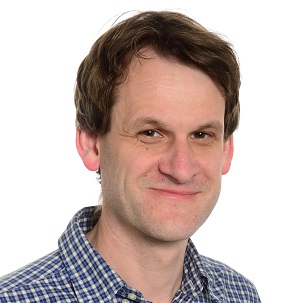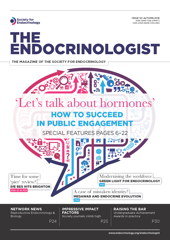
Students taking part in the 'Pathways to Medicine' scheme (c) Imperial College London
Currently, it might be more accurate to speak of social immobility rather than social mobility in the UK. The situation into which you are born, and its attendant advantages and disadvantages, have a tremendous influence on your progress through life, perhaps more so than 70 years ago. A recent report by the social mobility and educational charity, the Sutton Trust, has described how those at the top of many professions are predominately privately and Oxbridge educated.
While the press understandably prefers to dwell (in shirtless high definition close up) on which successful actors went to Eton, the professions found by this report to be disproportionately dominated by individuals from independent schools include medicine. Doctors are not representative of the public they serve, and students from poorer socioeconomic backgrounds are significantly under-represented in medical schools.
Suggested reasons include more limited educational opportunities, and a lack of role models or support from family, school and peers. These factors might be relevant to many types of higher education applications, but some difficulties are specific to medicine.
SHORTCOMINGS OF THE SELECTION PROCESS
Many medical schools require a variety of non-academic skills or experiences which may not be equally available to all, for instance evidence of leadership and teamwork, and extracurricular interests. These are obviously not impossible to come by for even the most disadvantaged applicant, but students from more affluent backgrounds are likely to have more opportunity to amass such experiences.
Training a doctor takes time and money, so medical schools want to ensure that students they accept have a realistic view – that they won’t drop out upon realising that they hate sick people, that white coats are unflattering, or that, say, the rewards of being a doctor are insufficient to compensate for the responsibility, the unsocial hours, the stress, and the Secretary of State for Health.
Relevant work experience is therefore critical, but can be difficult to access for students without family connections to the health service. When Trusts are stretched to deliver core services, equitable work experience provision is prioritised just ahead of providing gowns in a colour of the wearer’s choice and adequately chilled champagne in outpatient departments.
'When we assessed our outreach activities several years ago, it seemed students needed sustained engagement, rather than one-off events, to increase their chances of winning a medical school place'
ADDRESSING THE INEQUALITIES
So how should medical schools try to address these inequalities to ‘widen participation’, as it is described in current outreach parlance? Universities protest, with some justification, that they cannot be expected to undo the 18 or more years of disadvantage that some of their applicants will have faced. Most, however, make serious efforts to tackle the issue.
At Imperial College we have our ‘Pathways to Medicine’ scheme, cofunded by the Sutton Trust and supported by Health Education England and the Medical Schools Council. We have a strong record of providing admissions advice, visiting schools, running workshops and speaking at admissions events for the Royal Society of Medicine, the Student BMJ and at educational conferences. However, when we assessed our outreach activities several years ago, it seemed students needed sustained engagement, rather than one-off events and interventions, to increase their chances of winning a medical school place. We therefore designed ‘Pathways to Medicine’ as a cohesive programme of activities that school pupils engage with over 2½ years.
THE ‘PATHWAYS TO MEDICINE’ SCHEME
We enrol 60 pupils every year from under-performing schools in London. They start the programme midway through Year 11: late enough for their teachers to have some idea of whether they are likely to get the required grades at A-level, and early enough for us to provide guidance on A-level choice.
We set pupils up with current medical students as ‘e-mentors’, who can answer questions and concerns. During their Sixth Form years, the students visit the College for taster evenings, where they hear from practising doctors, perform biomedical experiments and interact with medical students. A recent event involved pupils learning about regulation of body weight, using a thermal imaging camera to look at energy expenditure and a body composition analyser to measure their percentage body fat.
We arrange work experience placements for all these students, and in Year 12 they come to the College for a week-long summer school. Here, amongst other things, they experience problem-based learning, get involved in surgical skills training and receive guidance on sitting UKCAT (UK Clinical Aptitude Test) and BMAT (Biomedical Admissions Test) entrance exams.
The programme works best when there are strong links between the school and the College. We rely on teachers to put suitable students forward, and we provide advice to them on writing references for applications to medicine.
Those on the scheme are always interested to find out about student life. We work closely with ICSM Vision, a widening participation society run by Imperial medical students, who do tremendous work supporting these activities, running medical conferences which the ‘Pathways to Medicine’ pupils also attend, and providing one-to-one interview training for each participant.

Students take part in the 'Pathways to Medicine' scheme (C) Imperial College London
ASSESSING EFFECTIVENESS
So does it work? The first cohort have only just received their A-level results and, while many have received offers of medical school places, we still need to formally assess the programme’s success later in the year, comparing participants with similar groups who have only been involved in one-off medical outreach events rather than a sustained programme. Our second and third cohorts are currently running, and we hope to recruit a fourth in 2017.
ONGOING ACTIVITIES
There is much discussion in the sector of how to most effectively widen participation in medicine. The Medical Schools Council’s ‘Selecting for Excellence’ report1 made several recommendations regarding socioeconomic background. It also commissioned research identifying ‘cold spots’ in UK medical outreach activities, allowing medical schools to target their efforts to those regions with the greatest need.
The Inquiry into Access into Leading Professions by the All Party Parliamentary Group on Social Mobility held a recent session on medicine. This highlighted the importance of collaboration between schools and universities, of accessible work experience, transparency and accountability in admissions processes, and of contextualising admissions.
Medical schools must cope with the sometimes conflicting priorities of making medical education equally attainable to those from all backgrounds and ensuring that those we recruit will make good doctors. Because entry to medicine is so competitive, entry requirements are high, which can be a barrier to widening participation. Perhaps we should ask not ‘How many A*s we can ask for?’ but ‘How many do you need to be a good doctor?’
Evidence shows that state school-educated applicants perform better at university than grade-matched privately educated applicants, suggesting that lowering entry requirements for applicants from particular backgrounds will not necessarily lower standards. However, universities are encouraged to maintain high entry requirements by the importance of entry tariffs in the calculations that dictate institutional rankings. Nevertheless, many medical schools are now using such contextual data to support their widening participation programmes. The new UK Medical Education Database (UKMED) will allow us to track doctors through their undergraduate and postgraduate careers and should help guide such contextual analysis.
PUTTING MEDICINE WITHIN REACH
Beyond these initiatives, we must ensure that pupils from lower socioeconomic backgrounds can conceive of medicine as a practical career. Many academically gifted pupils at schools I visit feel that medicine is not for them, but the preserve of some mistily imagined coterie of elite, naturally brilliant scholars. They imagine that doctors arrive fully formed, with all of the required skills and experiences.
We must persuade them that doctors are people like them, that we are looking for potential rather than finished products, and that the doctors of the future are right here, hidden within themselves.
Kevin Murphy
Admissions Tutor for Widening Participation in Medicine and Professor of Endocrinology and Metabolism, Imperial College London
REFERENCE
- Medical Schools Council 2014 Selecting for Excellence








